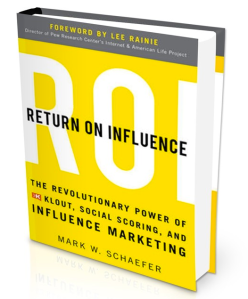When was the last time you went out to eat?
Did you notice any familiar symbols on the menu?
hint: lower left corner 🙂

image taken at Boyd’s Jig and Reel, Knoxville, Tn
It is no surprise that social media has become a popular tool for the hospitality industry to promote engagement with customers. From diners to five star cuisine, an overwhelming percentage of restaurants have jumped on the social media band wagon to convince customers to come in for a bite. According to the Hospitality Technology’s Customer Engagement Technology Study, 89% of restaurants use social media to attract customers. Earlier this week, I was asked to apply my knowledge as a social media student/server to help a friend who is managing a social media account for a local restaurant. Here are a few of the tips we discussed…
Quick Tips for Social Media in the Food Industry
1. Understand the advantages of different platforms
Facebook and Twitter are the most widely used platforms by restaurants. This fact can most likely be attributed to the high number of members held by each social media giant. According to the Hospitality Technology’s study mentioned above, 94% of food service companies use Facebook, while 77% of these companies use Twitter. These platforms are useful for engaging repeat customers and regulars. For instance, these platforms are a great forum for discussing special events or promotions. Perhaps the restaurant has a band playing or is holding a wine tasting. These platforms may be used to remind customers of special events, or provide a place for customers to post comments. In my experience, these platforms help keep the brand top of mind for individuals who already enjoy the brand. However, most posts will not be seen unless an individual has followed or like the page of the restaurant. So how is social media used to attract new customers? When talking to guests I have met that are traveling or new to town, the most mentioned tools used to find a new restaurant were platforms like Urbanspoon or Yelp. These platforms are tailored to the food industry and have search capabilities to browse nearby restaurants. For this reason, it is advisable to have detailed descriptions of food items, and photos of the establishment. Consider these platforms as a place to make a first impression. Of course, these are just a few of the various platforms available to interact with guests. When creating content for other platforms, remember to consider the audience and the type of engagement typical of the social media. What kind of content are these individuals searching for? How can this restaurant create that kind of content?
2. Make a plan for social media accounts
Do not dismiss social media because it is free advertising. When businesses purchase a print ad or a billboard, each detail is reviewed and arranged to best convey a message to consumers. This level of planning and consideration needs to be applied to social ads as well. What needs to be accomplished by a social media campaign? Who are you trying to reach? How can I tailor my information to these people? Something as simple as timing can greatly change the effect of the ad. Decide an overarching theme or personality to be portrayed in ads. This will help to make posts have a flow and consistency for viewers.
3. Meet my friend HootSuite

If you are not familiar with this program already….get excited. Hootsuite provides users with a space to manage multiple accounts and platforms at the same time. It can also be used to schedule posts, so that users may plan out social media events ahead of time. I doubt that any manager or owner has enough free time to post manually each day. This tool makes it easy for these busy individuals to set up social posts for the week and move on to other tasks.
Hopefully some of this information is helpful. I would love to hear other tips for creating successful social media campaigns for restaurants. What do you think??
Ebeth
 image retrieved from bubonik.com
image retrieved from bubonik.com 









